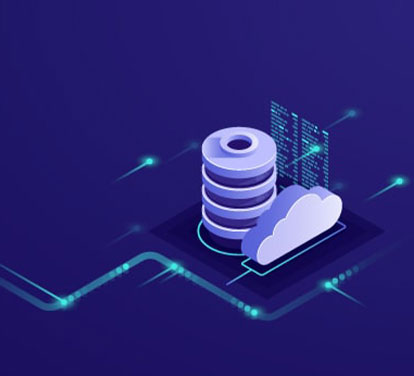As more and more customers are approaching Oracle Cloud implementations, some of them have been asking some good questions, and I thought I would bring most of these questions in one common forum for the benefit of everyone. This blog is not to answer all the questions but to encourage you to ask questions. I’ve addressed some of the critical high-level questions on Oracle Cloud Infrastructure.
1.No question is bad. Feel free to go wild. First and foremost – Why Oracle Cloud?
How does business benefit from Oracle Cloud ERP? What kind of business transformation do you want to achieve?
It is critical to align business objectives, business processes, and IT roadmap with Oracle Cloud ERP roadmap for successful implementations. What are the choices?
No other cloud platform has such a comprehensive set of business applications in the Cloud as Oracle. All the core applications of HCM, finance, procurement, sales, project, and supply chain are fully integrated into one platform. With the Oracle Cloud ERP platform, a bunch of integration tools can be used to integrate your other business applications.
2. Legacy systems
Do you need to think about it? Yes, legacy systems and legacy processes are about to be dumped. You would need many questions to have good answers early on. What do you want to bring into your Cloud? What do you want to do with the data you don’t bring into Cloud? Who and how will you access this data? How long do you keep this data? How will you validate the data brought in? Do you want to retain the same processes, chart of accounts, calendar, etc., in the Cloud? Do you want to redesign any of these? What applications do your legacy systems integrate with? What happens to these integrations? Do they support the new platform?
Even though these Oracle Cloud ERP Apps are redesigned ground up, most features and functionalities are still taken from on-premises. There is already robust support to handle almost all kinds of business processes and complexities required for small to substantial multinational organizations. Keep in mind that even though Oracle is adding many features in every release, there are still some functionalities not available in Release 13, which is the latest version.
Data migration is a significant and crucial aspect. In the olden on-premise days, we used to write a bunch of data conversion and post-validation programs to move the data from the legacy to a new system. Oracle provides various ways to convert legacy data – File based loader is a great tool for one-time or repeated manual loads.
3. Change Management
Who are the key decision makers? Are they trained in Oracle Cloud ERP? Are your users distributed in multiple locations? What kind of training will you need to consider? Do you need a tailored and repeatable user training program? What about the administrators and IT team? What is their role in Oracle Cloud ERP?
Of course, different folks have different training needs. Business users engaged in Cloud implementation should take the pre-implementation training to ask the right questions and get the implementation catered to their needs. There are tons of materials available, both free and paid. A qualified SI can help you and your team to identify the right content and make recommendations. IT users need to know how to maintain the application, access controls, patching schedules, integration needs, architecture, testing, etc.
Again it is crucial to establish upfront that the objective of going to Oracle Cloud is to adopt the power of rich functionalities of tier-one systems. Sometimes, business users need to make hard decisions and let go of their custom processes. The business champion must be given all the authority and will play a pivotal role.
4. Reporting and Analytics
How do I get my reports in Cloud? Can I build my reports? Is there any excel experience? What are the canned reports available? Who will develop complex reports? Are these reports secure? Can I share some of my reports with my team?
The most powerful aspect of Oracle Cloud ERP solutions is that it has many great reporting capabilities. The trick is to know which one to be used when. Of course, Oracle acronyms don’t make it any easier– BI Publisher, Native Reports, OTBI, Smart Views, FR Studio, and Sunburst. Let me decrypt this for you.
- BI Publisher – For, Customer facing documents such as Customer invoices, Purchase orders, Check Prints, etc.
- Native Reports – Some seeded reports are available out of the box, such as Open AP, Open AR, Transaction Register, All POs, etc. These are well segregated and organized by module.
- OTBI (Oracle Transactional Business Intelligence) – One of the most potent features where users can build their reports on live application data and share them with others
- Smart Views – Excel reporting feature for slice and dice on real application data
- Financial Reporting Studio – Boardroom quality financial reports such as Balance sheets, Income statements, P&L reporting, etc.
- Sunburst – Excellent data visualization tool
5. Cloud Culture
Most companies run hybrid organizations – Cloud and On-Premises. So, Cloud may not be entirely new. But, if you don’t have any Oracle enterprise applications in Cloud, this could be a bit intriguing. The common questions are – What is the architecture? Single Sign On? Training? Patching cycle? Administration? Ways to Customize?
Many implementations fail because they can’t integrate or there are bad integrations. It is essential to set up the right expectations. You could find some of these are different from other cloud apps.
6. Project Planning and Governance
Isn’t it a cliché? Maybe, but let me explain – Three key expectations for any tier 1 enterprise applications are best in class, scalability, and, of course, security. So, Oracle has built a set of Cloud applications with these basic principles.
Now the question is – Do you have an appetite for the big bang or short bursts? What kind of integrations would you need? What kind of methodology do you need to follow? For instance, Oracle OUM Cloud implementation doesn’t have any requirements phase, and it starts right from the design phase. How much lead time does Oracle need to refresh? How many test instances do you have? How can you keep all instances at the same patch level? Did Oracle assign an Oracle Success manager? What kind of cadence is required?
Over the year, project planning and governance have gone to a different level; many SI’s(System Integrators), including Jade Global, have to completely retool the approach, methodology, team composition, and governance model to map it with Cloud implementations. You will need to understand this and be ready to run with it. The bottleneck of cloud implementation is often the customer’s readiness, not the SI’s implementation tasks.
7. Post-implementation Support
Who will be responsible for this? What are the service levels expected from SI and Oracle? Are you going live with any unresolved critical issues? Do you have workarounds? What is the post-implementation issue resolution process going to be? Who will coordinate with Oracle? What are the communication and issue-tracking plans after go-live? Will you bifurcate issues by types, such as training, admin, bugs., etc.? How can you quickly stabilize the system?
Some seasoned IT and business organizations will think about it ahead of go-live. But there are a lot of SMBs. For them, post-implementation support is an afterthought, and they will struggle unless they address the framework. Business perception and adaption will be formed on how fast you can stabilize the system and add incremental business value.
One of my customers has saved close to 80% savings in post-go-live support after moving to Cloud. They realized ROI from moving from on-premises EBS to Cloud faster than they originally planned.
Summary
Proper due diligence before and during the project will drive success. Please ask questions relentlessly until you get qualified responses, and be prepared to benefit from Oracle Cloud ERP. This is REAL and BIG, don’t be too late.
Feel free to share more interesting questions you may have in your mind!
Download datasheet: ERP Practice Overview More in my next blog…
Subscribe to our email Newsletter
Popular Posts













